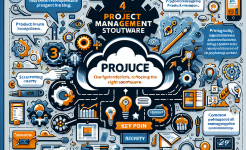Market Management
Market management within the IPD framework is about understanding the market landscape in depth. It involves conducting thorough market research to identify customer needs, market trends, and competitive forces. By analyzing market data, companies can segment the market into distinct groups based on various criteria such as customer demographics, behavior, and preferences. This segmentation helps in tailoring products to specific market segments, ensuring that the features and functions of the product meet the unique requirements of each group.
Moreover, market management also focuses on setting clear market goals and strategies. These goals should be aligned with the overall business objectives of the company. A well-defined market strategy outlines how the company plans to position its products in the market, what pricing strategy to adopt, and how to promote the products effectively. This process also involves continuous monitoring of the market to detect any changes or emerging opportunities that could impact the product development plan.
In addition, market management in IPD bridges the gap between the R&D department and the market. It provides valuable insights to the R&D team about what the market demands, enabling them to develop products that are not only technically feasible but also commercially viable. By keeping a close eye on market dynamics, companies can proactively adapt their product development strategies to stay ahead of the competition.
Product Strategy Development
Product strategy development is the cornerstone of the IPD R&D management system. It begins with a clear understanding of the company's long-term vision and business goals. Based on this, product managers formulate a product strategy that outlines the direction and scope of product development. This strategy takes into account factors such as market trends, technological advancements, and the company's core competencies.
A well-crafted product strategy defines the product portfolio of the company. It determines which products to develop, which ones to enhance, and which ones to phase out. This helps in optimizing the allocation of resources, ensuring that the company focuses its efforts on products that have the greatest potential for success. The product strategy also sets the roadmap for product development, specifying the key milestones and timelines.
Furthermore, product strategy development involves collaborating with various departments within the company, such as marketing, sales, and manufacturing. This cross-functional collaboration ensures that the product strategy is not only focused on technical innovation but also on meeting the needs of the market and the capabilities of the company's operations. By aligning the product strategy with the overall business strategy, companies can increase the likelihood of developing products that drive business growth.
Concept Development
Concept development is the creative phase of the IPD R&D management system. During this process, the R&D team generates ideas for new products or improvements to existing products. This involves brainstorming sessions, where team members from different disciplines come together to share their perspectives and insights. The goal is to come up with a wide range of concepts that address the identified market needs.
Once a set of concepts is generated, the team evaluates them based on various criteria such as technical feasibility, market potential, and cost. This evaluation helps in selecting the most promising concepts for further development. The selected concepts are then refined and developed into more detailed product concepts, which include descriptions of the product's features, functions, and user experience.
Concept development also involves creating prototypes or mock-ups of the product concepts. These prototypes help in visualizing the product and testing its functionality. They provide valuable feedback to the R&D team, allowing them to make necessary adjustments and improvements to the product concept. By investing time and effort in concept development, companies can ensure that the products they develop are innovative, user-friendly, and meet the market's expectations.

System Design
System design is a critical process in the IPD R&D management system. It focuses on defining the overall architecture and structure of the product. This includes determining the major components of the product, how they interact with each other, and the interfaces between them. A well-designed system architecture ensures that the product is modular, scalable, and easy to maintain.
During system design, the R&D team also considers factors such as performance, reliability, and security. They set performance targets for the product, such as speed, throughput, and response time. They also design the product to be reliable, with built-in redundancy and error-handling mechanisms. In addition, security is a top priority, especially in today's digital age. The system design should incorporate measures to protect the product from cyber threats and ensure the privacy of user data.
System design also involves creating detailed design specifications. These specifications provide clear instructions to the development team on how to build the product. They include details such as the hardware requirements, software algorithms, and manufacturing processes. By having well-defined design specifications, companies can ensure that the product is developed consistently and meets the desired quality standards.
Detailed Design and Development
Detailed design and development is where the product concept comes to life. In this process, the R&D team takes the system design and breaks it down into smaller, more manageable components. They then design and develop each component in detail, using the latest technologies and engineering practices.
The detailed design phase involves creating detailed drawings, schematics, and code for the product. The development team also conducts extensive testing at this stage to ensure that each component functions as expected. This includes unit testing, integration testing, and system testing. Unit testing focuses on testing individual components in isolation, while integration testing verifies how the components work together. System testing evaluates the overall performance of the product in a real-world environment.
During detailed design and development, the team also collaborates closely with other departments such as manufacturing and quality control. They ensure that the product design is manufacturable and that the manufacturing processes are optimized to produce high-quality products. Quality control measures are also implemented to detect and correct any defects early in the development process. By investing in detailed design and development, companies can ensure that the products they launch are of high quality and meet the customer's expectations.
Product Launch and Lifecycle Management
Product launch is the culmination of the IPD R&D management system. It involves bringing the product to the market, which includes activities such as marketing, sales, and distribution. A successful product launch requires a well-planned marketing strategy that creates awareness about the product and generates customer interest. The sales team then works to convert this interest into actual sales.
After the product is launched, product lifecycle management comes into play. This involves monitoring the product's performance in the market, collecting customer feedback, and making necessary improvements. Product managers also decide when to phase out the product and replace it with a new version. This decision is based on factors such as market demand, technological advancements, and the product's profitability.
Product lifecycle management also involves managing the product's supply chain. This includes ensuring that the raw materials are available, the manufacturing processes are running smoothly, and the products are delivered to the customers on time. By effectively managing the product launch and lifecycle, companies can maximize the product's revenue and profitability over its entire lifespan.
In conclusion, the six key processes of the IPD R&D management system - market management, product strategy development, concept development, system design, detailed design and development, and product launch and lifecycle management - are all interconnected and essential for the successful development and launch of products. Each process plays a unique role in ensuring that the products meet the market's needs, are technically innovative, and are commercially viable. By implementing these processes effectively, companies can improve their product development efficiency, reduce time-to-market, and gain a competitive edge in the market. Moreover, continuous improvement of these processes based on feedback and market changes is crucial for long-term success. As the business environment and market dynamics continue to evolve, companies need to adapt and refine their IPD R&D management systems to stay relevant and thrive in the highly competitive global marketplace.
ARTICLE TITLE :Discussion on the six key processes of the IPD R&D management system ,AUTHOR :ITpmlib

















